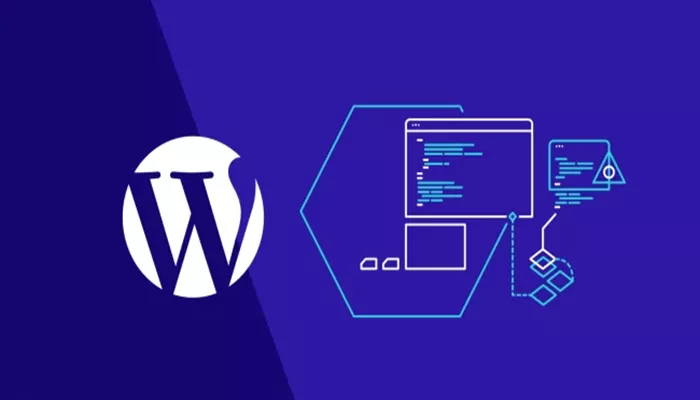WordPress originally started as a blogging platform but has since evolved into one of the most popular and powerful content management systems (CMS) worldwide. While WordPress’s core features are designed around blog content, it is highly flexible and can support many types of websites beyond blogs. These include business websites, portfolios, e-commerce stores, and various other non-blog websites. This article will explore how to effectively use WordPress to create a non-blog website and help you leverage its flexibility to meet your specific needs.
Understanding the Difference Between WordPress’s Blogging Features and Non-Blog Website Needs
WordPress comes with built-in blogging functions such as posts, categories, tags, comment systems, and blog archives. These features are essential for traditional blogs as they help organize content and foster reader engagement. However, for non-blog websites, these features may be unnecessary or even distracting. For example, if your website is intended to showcase company information, services, or products, constantly showing blog posts or comments can clutter the site and detract from the user experience.
Therefore, the key to building a non-blog website on WordPress is to adjust or disable these blogging features so that the focus shifts entirely to displaying static pages. This creates a cleaner, more professional look better suited for websites that do not revolve around frequently updated posts.
Choosing a Theme That Fits Non-Blog Websites
Your theme largely determines your website’s appearance and layout. Selecting a theme suited for non-blog websites is crucial. Many WordPress themes are designed with blogs in mind, featuring blog post templates, archives, and comment sections.
For non-blog websites, it is best to pick themes designed for businesses, portfolios, or informational sites. These themes typically have clean, modular layouts with various page templates such as homepages, about pages, contact pages, and service descriptions. They usually avoid unnecessary blog elements and allow you to showcase your content more effectively. Free themes labeled for “business” or “corporate” use are a good starting point, while premium themes like Divi, Astra, and OceanWP are popular for their customizability and rich template options.
Avoid themes heavily focused on blog features or that come bundled with excessive shortcodes and complex post layouts. While these can be useful for blogs, they can make your site bulky and harder to manage if you don’t need blog functionality.
Disabling or Hiding Blog Features to Highlight Page Content
Since non-blog websites rely on static pages rather than posts, managing content shifts from “posts” to “pages.” By default, WordPress displays your latest blog posts on the homepage, which is not ideal for a static site. You need to set a static page as the homepage and ensure that blog post listings and archives are hidden or disabled.
Also, features like categories, tags, and author archives should be hidden or disabled to prevent empty or irrelevant pages from appearing, which can confuse visitors and hurt your site’s SEO.
Using Plugins to Extend Non-Blog Website Functionality
One of WordPress’s greatest strengths is its extensive plugin ecosystem, which can enhance your non-blog website without any coding.
For instance, to completely disable comments, there are plugins available that can turn off comments across your entire site. This helps keep the site clean and avoids spam. Sitemap plugins are also essential to help search engines better understand your site’s structure and improve SEO while excluding unnecessary blog-related pages.
Page builder plugins like Elementor allow you to create visually appealing, custom page layouts through drag-and-drop interfaces. This gives you the freedom to design your site exactly how you want without needing technical skills.
Managing Content: Focus on Pages and Custom Content Types
Non-blog websites primarily use pages to organize content. You can create essential pages such as Home, About Us, Services, Portfolio, and Contact, and organize them in a clear navigation structure. Pages do not use categories or tags, simplifying content management.
If you want to showcase specific types of content like testimonials, team member profiles, or projects, consider using custom post types. Many themes and plugins support these, allowing you to create specialized sections that are easier to manage and present professionally.
SEO Considerations for Non-Blog Websites
Even if your non-blog site is updated less frequently than a blog, search engine optimization remains vital. Use clear page titles, meta descriptions, and clean URL structures. Submit your sitemap to search engines to ensure all important pages are indexed correctly.
Also, avoid letting search engines index empty or irrelevant blog archive pages. This can dilute your SEO efforts. SEO plugins can assist you in fine-tuning each page’s optimization by helping with metadata, keywords, and content analysis.
Conclusion
Building a non-blog website with WordPress is entirely feasible and straightforward. The key is to select a suitable theme, disable unnecessary blog features, focus on managing pages, and use plugins to extend functionality. Thanks to WordPress’s flexibility and rich ecosystem, you can create a professional and user-friendly website tailored to your needs.
Whether you want to build a corporate site, portfolio, or product showcase, WordPress provides an excellent foundation. Hopefully, this guide helps you understand how to harness WordPress for non-blog websites and create a site you’re proud of.
Related Topics
- How to Find Wordpress Admin URL from Database
- Fake WordPress Security Plugin Grants Attackers Remote Access
- 5 Best Alternatives to WP Simple Pay for WordPress

